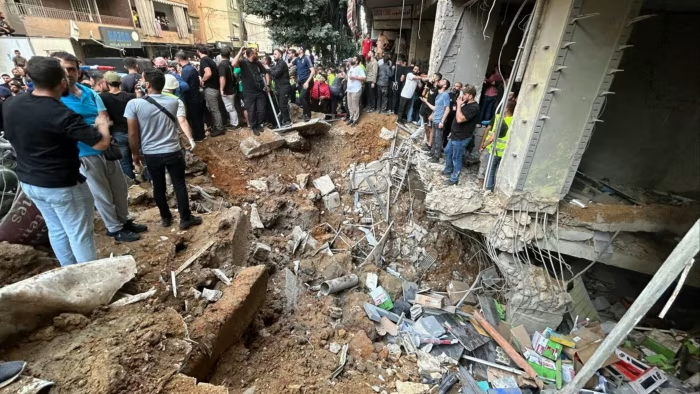As tensions escalate between Israel and Hezbollah, the threat of a wider war looms over the region. Israel faces the potential of a massive bombardment targeting its cities and strategic military assets, a scenario that would dramatically alter the current conflict landscape.
Since Hamas’s cross-border assault on October 7, which saw widespread violence and significant loss of life, Israel has found itself in a precarious situation. The Israel-Hezbollah dynamic, marked by regular exchanges of fire, has intensified, raising fears that the region may be on the brink of a wider and more devastating conflict.
The exchanges of fire between Israel and Hezbollah, the Iran-backed militant group operating out of Lebanon, have until now been relatively contained to the border regions. However, the frequency and intensity of these skirmishes have escalated in recent weeks, signaling that both sides may be preparing for a larger confrontation.
United Nations officials have issued stark warnings about the catastrophic potential of such a conflict. “A larger war between Israel and Hezbollah would lead to widespread death and destruction on an unprecedented scale,” a UN spokesperson stated. “The humanitarian consequences would be dire, affecting not only the immediate region but potentially causing ripples across the globe.”
A Different Kind of War
For Israel, a war with Hezbollah would represent a significant shift from its current operations against Hamas in Gaza. Unlike Hamas, Hezbollah boasts a considerably larger and more sophisticated arsenal. With greater numbers of combatants and more advanced weaponry, Hezbollah poses a formidable threat.
“Hezbollah’s capabilities far surpass those of Hamas,” said military analyst Yossi Melman. “They have advanced rockets and missiles that can reach deeper into Israeli territory, potentially causing much more damage and casualties.”
The prospect of a prolonged and intensive bombardment of Israeli cities and critical infrastructure adds an additional layer of complexity to Israel’s military strategy. The Israeli Defense Forces (IDF) would need to adapt their tactics and allocate significant resources to counter such a threat.
The potential human toll of an all-out conflict between Israel and Hezbollah is a major point of concern. Both sides are aware that civilian centers could become targets, leading to large-scale displacement and a humanitarian crisis. In a region already strained by conflicts and economic instability, the additional burden could be catastrophic.
Humanitarian organizations are bracing for the potential fallout. “The displacement of thousands, possibly millions, of people could overwhelm existing aid mechanisms,” said a representative from the International Red Cross. “We are preparing for all scenarios, but the scale of need could far exceed our current capabilities.”
Iran’s support for both Hezbollah and Hamas complicates the geopolitical landscape. Tehran’s backing provides these groups with resources and strategic guidance, effectively bolstering their ability to challenge Israeli forces. This dynamic adds a layer of international tension to the situation, as any escalation could draw in regional and global powers.
“Iran’s involvement is a key factor in this conflict,” noted Middle East expert Dr. Nermeen Shaheen. “Their support for Hezbollah and Hamas is not just tactical but ideological. Tehran views these groups as essential components of its broader strategy to counterbalance Israeli influence in the region.”
Amid the rising tensions, diplomatic efforts are intensifying. International actors, including the United Nations and various European nations, are working behind the scenes to avert a full-scale war. Dialogues are ongoing, with mediators seeking to establish ceasefires and de-escalate the situation.
“The international community must act swiftly to facilitate dialogue between the parties,” urged UN Secretary-General António Guterres. “We are committed to supporting peace efforts, but the window for preventing a larger conflict is closing rapidly.”
U.S. involvement also plays a critical role. Washington has been vocal in urging restraint and has engaged in back-channel diplomacy to prevent the situation from spiraling out of control.
As the specter of a wider war between Israel and Hezbollah casts a shadow over the region, the stakes could not be higher. The potential for massive bombardment and extensive civilian casualties underscores the need for urgent and effective diplomacy. Both Israel and Hezbollah must navigate this precarious situation with caution, aware that the consequences of miscalculation could be catastrophic.
The coming weeks will be crucial in determining whether this tense standoff will escalate into a full-blown conflict or whether cooler heads will prevail, leading to a de-escalation and potential peace talks. For now, the world watches with bated breath, hoping for a resolution that spares further suffering and upholds the prospects for lasting peace in the region.








